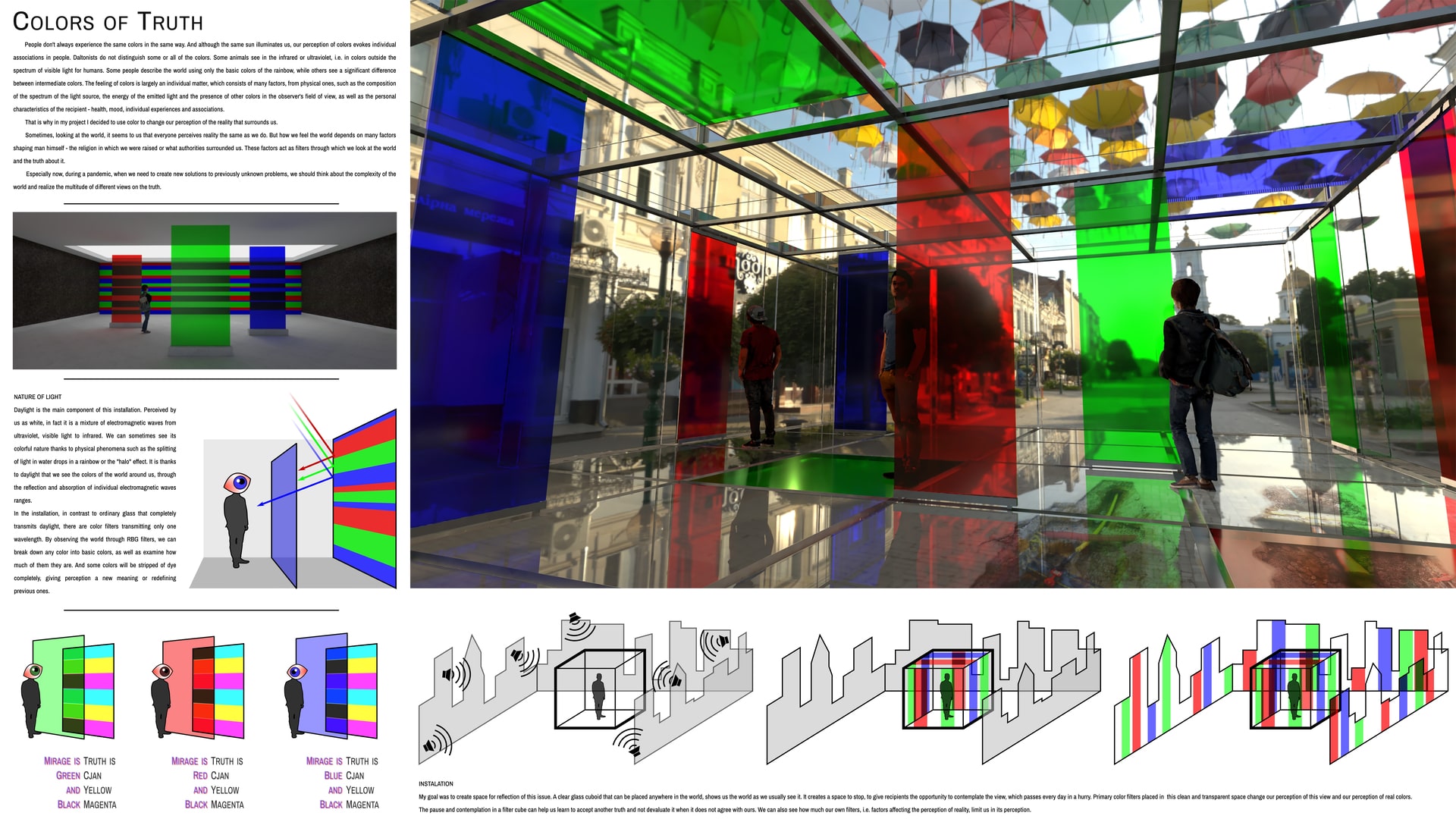Project Description
People don't always experience the same colors in the same way. And although the same sun illuminates us, our perception of colors evokes individual associations in people. Daltonists do not distinguish some or all of the colors. Some animals see in the infrared or ultraviolet, i.e. in colors outside the spectrum of visible light for humans. Some people describe the world using only the basic colors of the rainbow, while others see a significant difference between intermediate colors. The feeling of colors is largely an individual matter, which consists of many factors, from physical ones, such as the composition of the spectrum of the light source, the energy of the emitted light and the presence of other colors in the observer's field of view, as well as the personal characteristics of the recipient - health, mood, individual experiences and associations. That is why in my project I decided to use color to change our perception of the reality that surrounds us. Sometimes, looking at the world, it seems to us that everyone perceives reality the same as we do. But how we feel the world depends on many factors shaping man himself - the religion in which we were raised or what authorities surrounded us. These factors act as filters through which we look at the world and the truth about it. Especially now, during a pandemic, when we need to create new solutions to previously unknown problems, we should think about the complexity of the world and realize the multitude of different views on the truth. My goal was to create space for contemplation on different ways of looking at the world. A clear glass cuboid that can be placed anywhere in the world, shows us the world as we usually see it. It creates a space to stop, to give recipients the opportunity to contemplate the view, which passes every day in a hurry. Primary color filters placed in this clean and transparent space change our perception of this view and our perception of real colors. The pause and contemplation in a filter cube can help us learn to accept another truth and not devaluate it when it does not agree with ours. We can also see how much our own filters, i.e. factors affecting the perception of reality, limit us in its perception.
